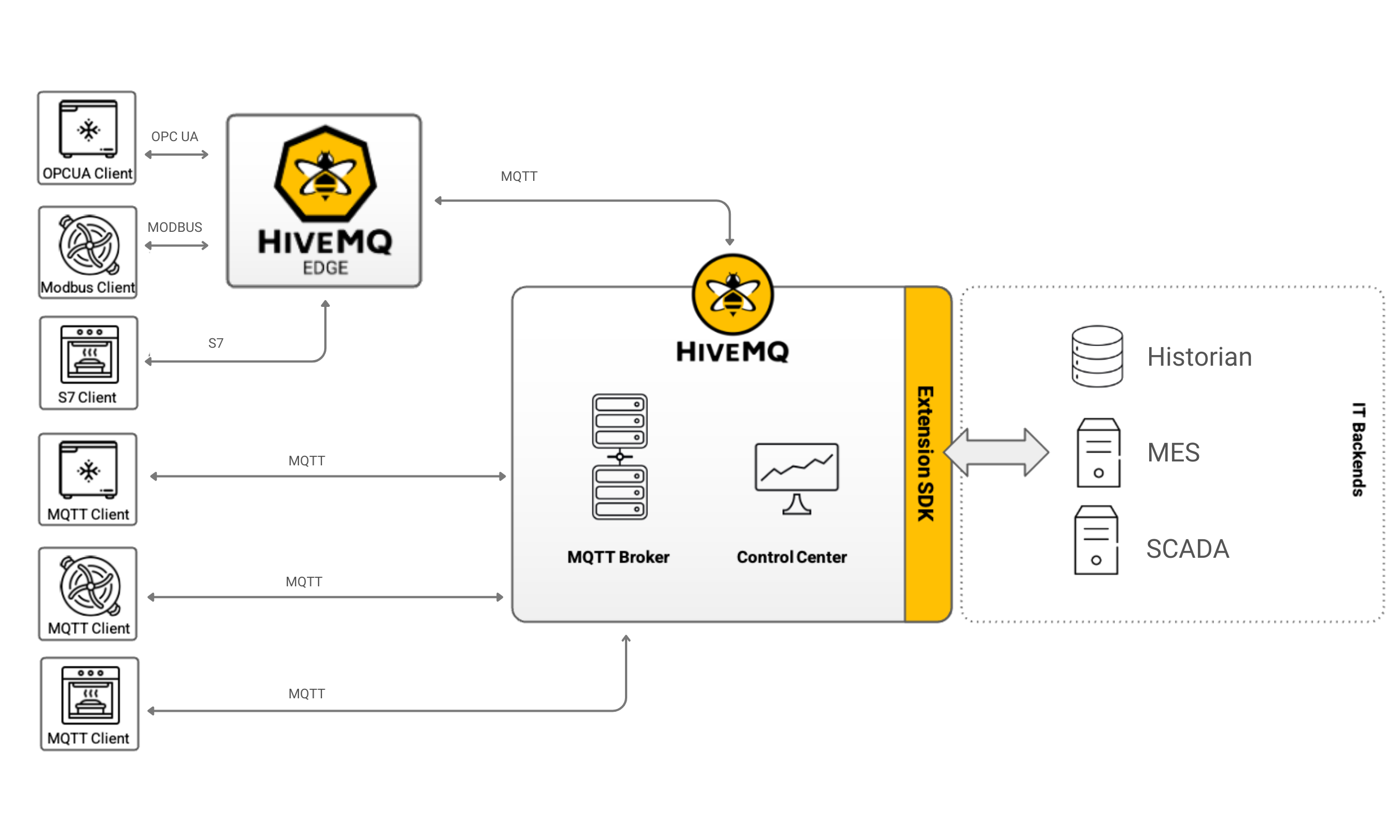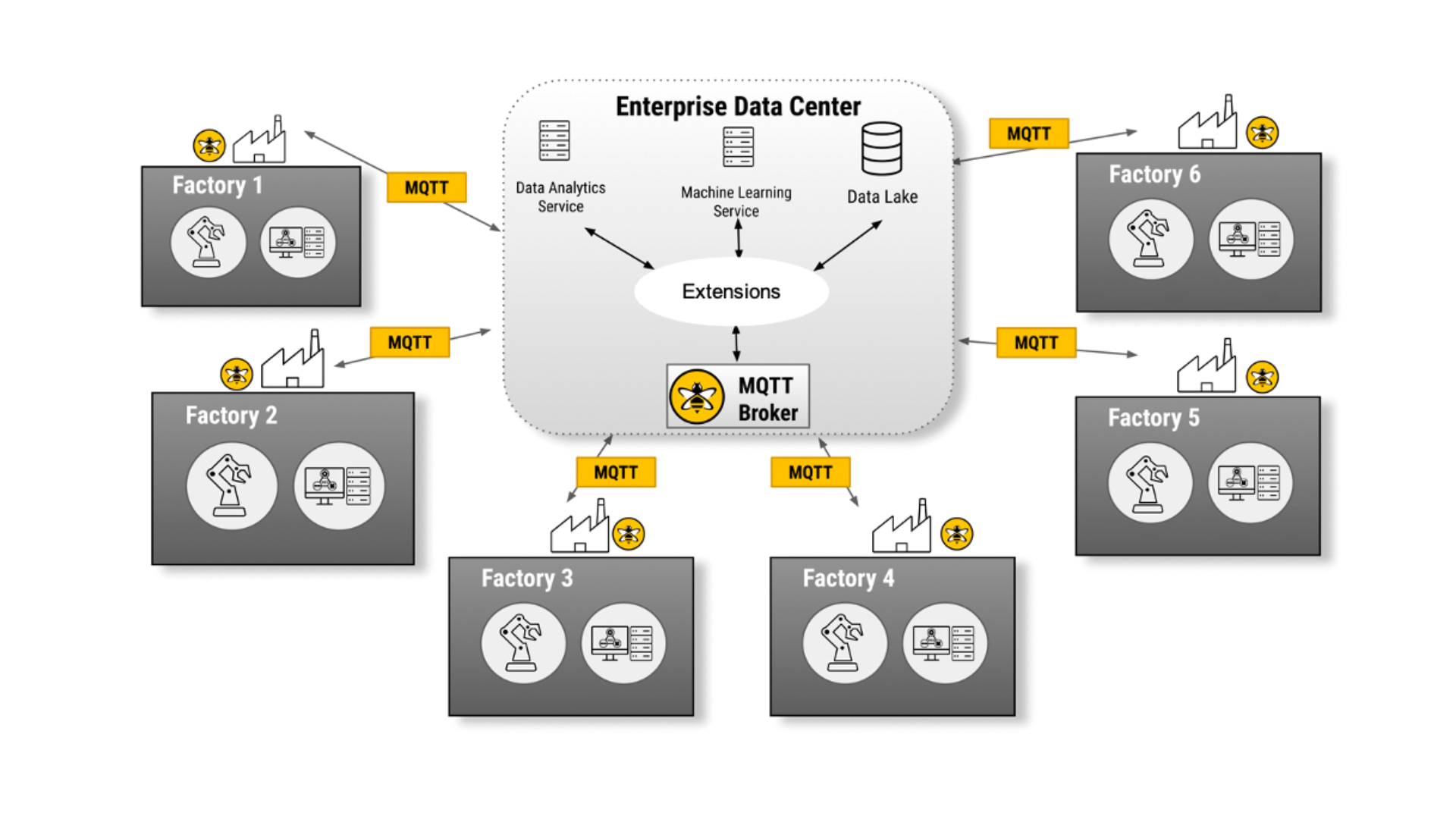Explaining to OT Teams the Importance of MQTT for IT/OT Interoperability
The challenge of Information Technology/Operational Technology (IT/OT) interoperability is a significant and complex topic within an Industry 4.0 transformation journey. Both systems traditionally evolved independently, leading to the use of different technologies, protocols, and standards. Bridging the gap between these technologies can be challenging, especially when it comes to seamless communication and data exchange.
Over the last decade, MQTT has become the de facto standard in Industrial IoT. Its widespread adoption across industries means that it is well-supported by a variety of devices, platforms, and software solutions. This ensures compatibility and ease of integration with existing infrastructure. Security is also a top priority in industrial environments. MQTT is well-suited as it supports secure communication through features like Transport Layer Security (TLS) and authentication mechanisms.
Let's go into a little more detail about the contributions of the MQTT protocol to interoperability in an industrial context.
Convergence of OT and IT: The Gap
The traditional separation between OT and IT has been a long-standing characteristic in industrial environments. This separation is rooted in the historical development and distinct purposes of these two domains within organizations. The gap can be attributed to differences in their core purposes, priorities, and mindset regarding technology adoption, particularly open standards.
Purpose:
OT: OT deals with the control and monitoring of physical processes and assets. It includes systems like SCADA (Supervisory Control and Data Acquisition), PLCs (Programmable Logic Controllers), and industrial control systems. The primary focus of OT is on ensuring the reliability, safety, and efficiency of industrial processes.
IT: On the other hand, IT is concerned with managing and processing information. It encompasses networks, servers, databases, and enterprise applications. IT is more oriented toward business processes, data storage, and information flow within an organization.
Mindset Differences:
OT: The OT mindset is traditionally conservative and prioritizes stability, reliability, and safety. OT systems often have longer lifecycles, and changes are approached cautiously to avoid disruptions to critical processes. The emphasis is on ensuring the continuity of operations with minimal risk to physical assets and personnel.
IT: The IT mindset tends to be more dynamic and adaptable, focusing on innovation, scalability, and efficiency. IT environments are accustomed to frequent updates, advancements in technology, and the integration of new solutions to improve overall organizational performance.
Technology Adoption:
OT: OT systems have historically relied on proprietary technologies and protocols. The closed nature of these systems was intended to provide a high level of control and security over industrial processes. This approach often results in isolated and siloed OT environments with limited interoperability.
IT: IT has embraced open standards and interoperability to enable seamless communication between diverse systems. Open standards facilitate the integration of different technologies and the development of scalable, flexible, and interconnected IT architectures.
Bridging the gap between OT and IT involves fostering a culture of collaboration and understanding. Organizations need to encourage communication between OT and IT teams, aligning their goals and developing strategies for adopting open standards that facilitate interoperability without compromising safety and reliability.
MQTT offers an open standard protocol that can be used in both systems in a secure and scalable way.
Optimizing Operations in IIoT Using MQTT
Now that we have identified a common protocol, we need a common language to discuss between systems. Here is where Sparkplug enters the game.
Sparkplug typically operates on top of the MQTT on a reliable broker like HiveMQ. It is an open-source specification designed to standardize communication between industrial devices, particularly within Industrial Internet of Things (IIoT) environments. It provides a common language and set of guidelines for interoperability between devices, applications, and systems in the industrial space.
Sparkplug aims to simplify the development and integration of IIoT solutions by defining a consistent and efficient way for devices to communicate and share data in real-time. The Sparkplug specification includes guidelines for data representation, device discovery, and efficient event notification, promoting a more seamless and standardized approach to industrial communication, thus optimizing operations.
Where Do You Put Things Together for IT/OT Interoperability?
With a protocol and common language, you need a reliable platform to put things together. The HiveMQ platform is a highly scalable and enterprise-ready messaging platform designed for the Internet of Things (IoT) and machine-to-machine (M2M) communication. It is built on top of the MQTT protocol. HiveMQ provides a robust and feature-rich MQTT broker that enables secure and real-time communication between IoT devices and applications. With a focus on scalability, reliability, and ease of integration, HiveMQ is suitable for diverse IIoT and IoT use cases, ranging from smart homes to industrial automation.
The platform includes advanced features such as support for MQTT 5, fine-grained security controls, and extensive monitoring capabilities, making it a comprehensive solution for managing large-scale IoT deployments. It also has multiple data integration extensions that allow you to connect streaming platforms (such as Kafka, Kinesis, or Google Pub/Sub), database engines (such as PostgreSQL, MySQL, MongoDB, and others), and analytics platforms (such as Snowflake, Databricks, or any data lake that ingests data from Amazon S3).
Real-World Use Case Example for IT/OT Interoperability
Let’s take, as an example, a biscuit company that wants to digitally transform its industrial architecture to take advantage of all the data generated by each machine in the plant with analytics, AI, and even more.
Here is a high-level view of the local plant:

As mentioned above, many companies have chosen to adopt proprietary protocols, so the first step is to bridge their legacy protocols to MQTT messages. HiveMQ Edge can help you to interconnect OPC UA, Modbus, S7, ADS out of the box. The Edge also provides an MQTT bridging feature that allows you to publish information in a central broker in the factory.
In our biscuit company context, all the existing production lines can be bridged to the central broker via HiveMQ Edge. The new machines that can natively talk MQTT will be directly connected to the central broker and communicate using the Sparkplug framework. From there, industrial applications like SCADA or MES can connect to the central broker to consume the information generated by the production lines (Legacy ones or new ones) using the Sparkplug framework. The central broker is Sparkplug-enabled thanks to the HiveMQ Sparkplug Aware Extension, which extends HiveMQ with the functionality of a Sparkplug Aware Broker to fulfill the optional requirements of the Sparkplug specification.
Let's take a step back and see how this fits into a global view of the company.

Once the data is centralized in each local MQTT cluster, we can bridge it to a central MQTT cluster in the data center (or cloud) of the company. We then have several options to leverage data. Our database extensions allow you to ingest data into most of the market database engines, or you can use one of our analytics extensions to publish data to your enterprise data lake.
Depending on your use case, you can also use this kind of architecture to monitor your plants all around the world. HiveMQ provides a data quality feature called Data Hub that helps customers control the quality of the data before sending it to a central system and/or a data lake. This helps reduce the traffic and the environmental footprint of the system. Data Hub can also be leveraged to create an efficient alerting system based on schema validation with value limits controls. Messages can then be redirected to specific MQTT topics, which are used for alerting on anomalies.
As you can see from the example above, HiveMQ is bridging the gap between the OT and the IT worlds.
Practical Tips for OT and IT Teams on Adopting MQTT
Here are some key tips to support MQTT adoption in an OT/IT environment.
Educate the team:
Evaluate the technical knowledge of your teams (OT and IT) and carefully build a training plan.
Ensure that the teams understand the fundamentals of MQTT (You can refer to this series of videos to start your MQTT journey), its benefits, and how it fits into the broader Industrial IoT landscape.
Collaboration between teams:
Foster collaboration between OT and IT teams. Since MQTT often bridges the gap between these two domains, open communication channels are crucial. Establish joint working groups or meetings to align strategies, address concerns, and share knowledge.
Conduct a pilot project:
Start with a small-scale pilot project to evaluate MQTT's feasibility and benefits in a controlled environment. Select a use case that can demonstrate the advantages of MQTT in terms of real-time communication, scalability, or interoperability.
Understand security implications:
Work closely with your cyber security team to understand and implement the necessary security measures for MQTT adoption. Consider using Transport Layer Security (TLS) for encrypted communication and implement strong authentication mechanisms to ensure secure device connections.
Choose MQTT-compatible devices:
Ensure that the devices in your OT environment are MQTT-compatible or can be retrofitted with MQTT-capable modules. This may involve working with equipment vendors to update firmware or integrate MQTT support.
Develop a migration plan:
Create a detailed migration plan that outlines how existing systems will transition to MQTT. Consider the phased adoption of MQTT to minimize disruptions. This may involve retrofitting existing devices, updating communication protocols, or gradually introducing MQTT-enabled devices.
Standardize topic naming conventions:
Develop a standardized naming convention for MQTT topics within your OT/IT environment. Consistent topic structures facilitate communication, topic subscription, and data organization. Sparkplug is a good starting point if you don’t know where to start.
Implement Quality of Service (QoS) levels:
Understand the data delivery requirements of your OT processes and implement appropriate Quality of Service (QoS) levels. For critical applications, you may need higher QoS levels to ensure reliable and timely data delivery.
Monitor and optimize performance:
Implement monitoring tools to track MQTT broker performance, message throughput, and system health. Regularly review and optimize configurations to ensure efficient and reliable communication.
Provide ongoing training and support:
Offer continuous training and support for the OT/IT teams to address any challenges or questions that may arise during the adoption process. Keeping the teams informed and engaged is crucial for a successful MQTT implementation.
Document best practices:
Document best practices, lessons learned, and any specific configurations relevant to your OT environment. This documentation will serve as a valuable resource for troubleshooting, training new team members, and maintaining consistency.
Wrapping Up
In a nutshell, MQTT is crucial for OT/IT interoperability as it provides a standardized and efficient communication protocol that bridges the gap between OT and IT. It enables seamless, real-time data exchange, supports scalability and bidirectional communication, ensures security, and has gained widespread industry adoption, facilitating the integration of diverse systems and fostering the digital transformation of industrial processes in the era of Industry 4.0 and IIoT. Adding Sparkplug on top of MQTT provides a common language for OT and IT teams to exchange data and understand each other. Also, remember that technology helps a lot, but it’s not the only challenge. Bringing interoperability between two teams with completely different cultures is also a big part of the challenge to successfully drive an industrial digital transformation project.

Anthony Olazabal
Anthony is part of the Solutions Engineering team at HiveMQ. He is a technology enthusiast with many years of experience working in infrastructures and development around Azure cloud architectures. His expertise extends to development, cloud technologies, and a keen interest in IaaS, PaaS, and SaaS services with a keen interest in writing about MQTT and IoT.
